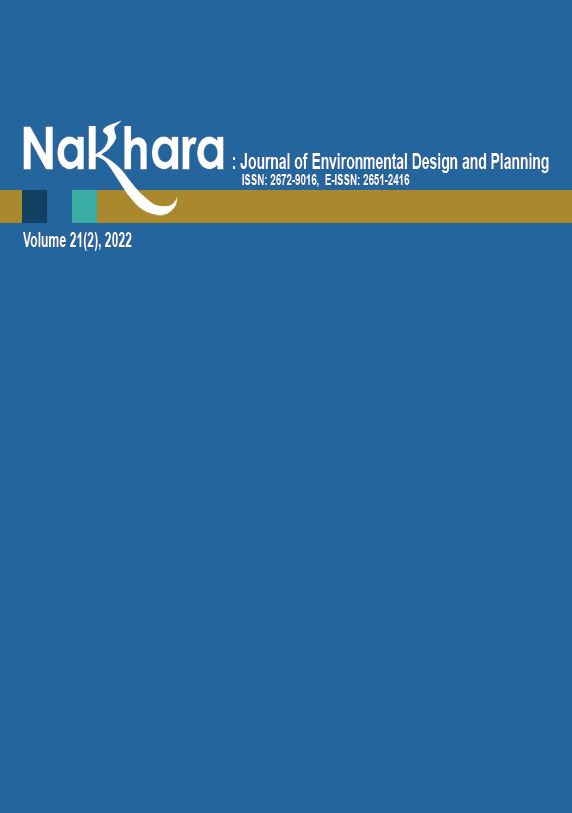Comparing Encased Stupas in Thailand and Myanmar
Main Article Content
Abstract
This article compares the design of encased stupas from the 15th to 19th centuries CE in Thailand along with examples from Myanmar in order to highlight the shared custom of encasement alongside the differences which developed over time. Archaeological evidence of stupa encasement is plentiful, particularly in Thailand, and shows variations in the design of space and patronage. In both these countries, the second or new donor sometimes left a gap between the original inner and new outer structure for patrons and pilgrims to move around the inner structure in veneration. This article compares examples alongside the customs and beliefs that underpin the function and meaning of the encasement. Archaeological evidence of encasement in Thailand is complemented by the presence of relics of the Buddha, kings, amulets, precious stones, and possibly consecration deposits reviewed through the chronology, epigraphy, architecture, art styles and reliquaries of five Buddhist stupas dating from the 15th to 19th centuries CE. These are compared with examples from the author’s native country of Myanmar, where some encasements have a space between inner and outer stupas and relics have been recorded. While there are many similarities, in Myanmar the relic deposits from research to date have been found in many parts of the stupa, which is somewhat different from Thailand. Together, these comparative and contextual aspects contribute to a deeper understanding of the relationships in patronage traditions and also differences in encasement design between the neighboring countries of Myanmar and Thailand.
Article Details

This work is licensed under a Creative Commons Attribution-NonCommercial-NoDerivatives 4.0 International License.
References
Aasen, C. T. (1998). Architecture of Siam: A cultural history interpretation. Oxford University Press.
Aung Kyaing, U. (1984). Bagan khit bi thu kar let yar myar [Art and architecture of Bagan period]. Sarpay Beikhman Press.
Aung Kyaing, U. (2017). Tamote shwegugyi phaya [Tamote Shwegugyi temple]. Mudita Press.
Aung Thaw, U. (1972). Historical sites in Burma. Archaeology Department. Ministry of Culture.
Bo Kay, U (1981). Bagan thu te tha na lan nyun [Guide to Bagan research]. Sapay Beikhman Press.
Byrne, D. (1995). Buddhist stupa and Thai social practice. World Archaeology, 27(2), 266-281. https://doi.org/10.1080/00438243.1995.9980307
Cooler, R. M. (2002). The art and culture of Burma. Northern Illinois University. http://seasite.niu.edu/burmese/Cooler/BurmaArt_TOC.htm
Cushman, R. D. (2006). The royal chronicles of Ayutthaya: A synoptic translation. In D.K. Wyatt (Ed.), The Siam Society.
Geiger, W. (1912). The Mahavamsa or the great chronicle of Ceylon. Oxford University Press.
Gray, P., & Ridout, L. (1995). Thailand: The rough guide. Rough Guides.
Hudson, B. (2004). The origins of Bagan, the archaeological landscape of upper Burma to AD 1300. University of Sydney. https://ses.library.usyd.edu.au/handle/2123/638#
Krairiksh, P. (1992). A revised dating of Ayudhya architecture (II). Journal of the Siam Society, 80(2), 11-26. https://thesiamsociety.org/wpcontent/uploads/1992/03/JSS_080_2b_PiriyaKrairiksh_RevisedDatingOfAyudhyaArchitectureII.pdf
Miksic, J. N. (2007). Historical dictionary of ancient southeast Asia: Historical dictionaries of ancient civilizations and historical eras. Scarecrow Press.
Ministry of Cultural Affairs. (1981). A guide to Anuradhapura. Central Cultural Fund.
Mitra, D. (1971). Buddhist monuments: Sahitya Samsad. Archive. https://archive.org/details/BuddhistMonuments/page/n3/mode/2up
Moe (Kyaukse). (2008, May 24). Kyauk sar de ka tha maing [History in stone inscription]. Articles of Makkhaya Shwezigon Stupa. Mandalay Daily.
Myat Kyaw, U. (2009). Bagan khit kyauk sar abidan [Dictionary of the stone inscription in Bagan period]. Pyi Zone Press.
Myo Nyunt Aung, U. (2015, July 24-26). The encased Buddhist monuments and Buddha statues in Myanmar [Paper presentation]. International Conference for Burma Studies, Chiang Mai, Thailand. https://www.b urmalibrary.org/docs21/Religion/Ko-Myo-(Myo-Nyunt-Aung)-2015-The_Encased_Buddhist_Monuments_and_Buddha_Statues_Found_in_Myanmar-en.pdf
Nan Oo Stupa Stone Inscription. (2007). Transliteration of Nan Oo stupa stone inscription, Nan Oo Stupa, Kyaukse Township, Mandalay Region.
Nyein Maung, U. (1972). Shae Myanmar kyauk sar myar (Atwe-tit) [Ancient Myanmar stone inscriptions (volume1)]. Department of Archaeology, Myanmar.
Paul, T. (1988). Phra Pathom Chedi: A little illustrated guide to Thailand’s first Buddhist monument. Chezpaul. https://www.chezpaul.org.uk/buddhism/articles/chedi.htm
Pichard, P. (1992-2001). Inventory of monuments at Pagan (Vol.1,1992; Vol.2, 1993; Vol.3, 1994; Vol.4, 1994; Vol.5, 1995; Vol.6, 1996; Vol.7, 1999, Vol.8, 2001). United Nations Educational, Scientific and Cultural Organization.
Pichard, P. (1993). Inventory of monuments at Pagan: Volume two monuments 256-552 (Vol.2). United Nations Educational, Scientific and Cultural Organization.
Revire, N. (2015). Re-exploring the Buddhist “foundation deposits” at Chedi Chula Prathon, Nakhon Pathom. In D. Christian Lammerts (ed.), Buddhist Dynamics in Premodern and Early Modern Southeast Asia (pp. 172-217). Institute of Southeast Asian Studies. https://www.academia.edu/14143879/Re_exploring_the_Buddhist_Foundation_Deposits_at_Chedi_Chula_Prathon_Nakhon_Pathom
Revire, N. (2018). Facts and fiction: The myth of Suvaṇṇabhūmi through the Thai and Burmese looking glass. TRaNS: Trans –Regional and –National Studies of Southeast Asia, 6 (2), 167–205.
Skilling, P. (2018). Relics: The heart of Buddhist veneration. In J. Stargardt & M. Willis, (Eds.), Relics and relic worship in the Early Buddhism: India, Afghanistan, Sri Lanka and Burma (pp. 4-17). British Museum Press.
Soni, S. (1991). Evolution of stupas in Burma, Pagan period: 11th to 13th centuries AD. Motilal Banarsidass Publishers.
Stratton, C. (2004). Buddhist sculpture of northern Thailand. Serindia Publications.
Svasti, P. (2016, August 16). A gathering of treasures: A new exhibition collects several sets of the Lord Buddha’s relics from various national museum under one roof. Bangkok Post. https://www.bangkokpost.com/life/social-and-lifestyle/1050681/a-gathering-of-treasures
Theint Theint Aung. (2022). Bronze and stone relic caskets in the Bagan museum. In (Alphawood Alumni Myanmar & E.Moore (Eds.), Masterpieces of Stone and Bronze Sculpture in the Bagan Archaeological Museum (pp. 47-52). Myanmar Alphawood.
Warren, W. (2000). Lanna style: Art & design of northern Thailand. Asia Book.

